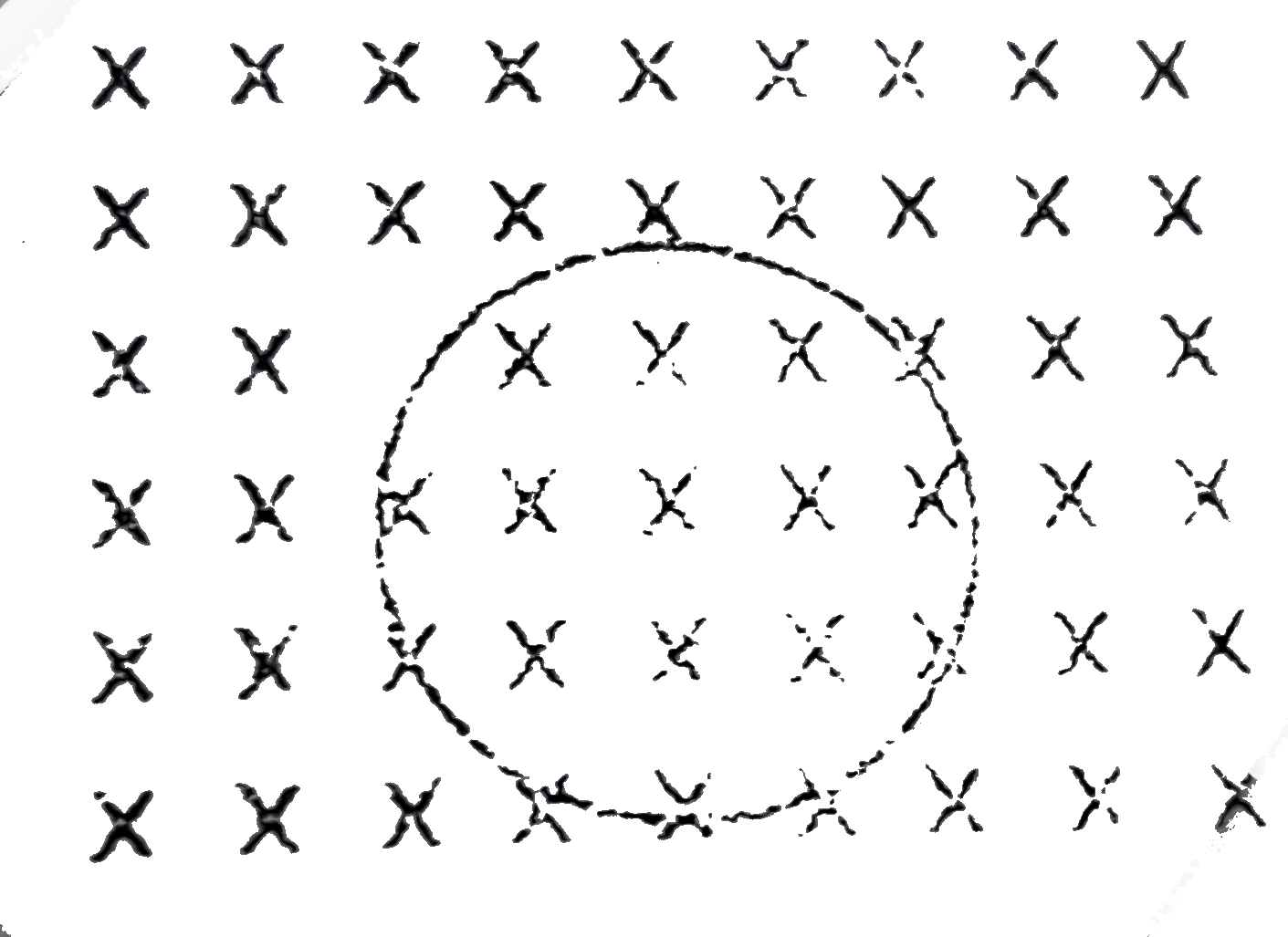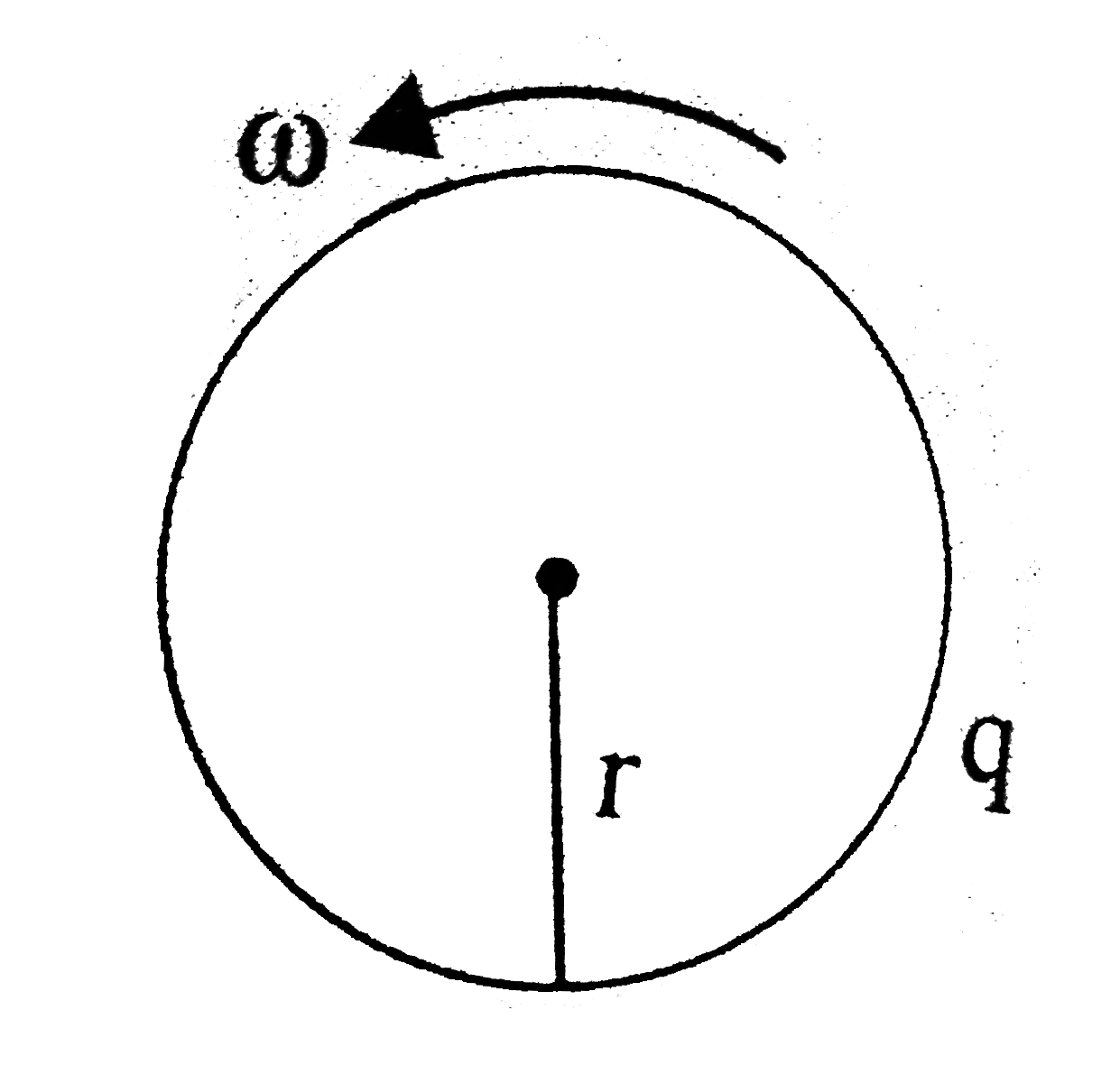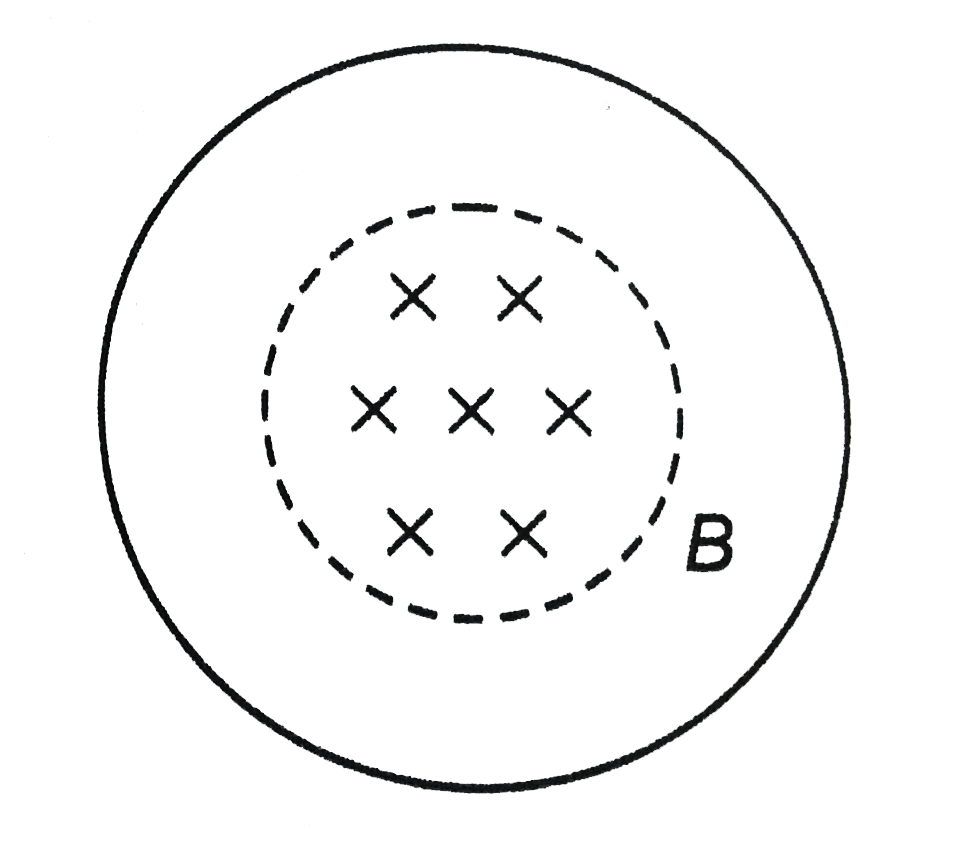A metal rod of resistance R is fixed along a diameter o fa conducting ring of radius r . There is a magnetic field of magnitude B perpendicular to the plane of the loop. The ring spins with an angular velocity ω about its axis. The centre of the ring is joined to its rim by an external wire W . The ring and W have no resistance. The current in W is
zero
Br2ω2R
Br2ωR
2Br2ωR
The correct Answer is:D
To solve the problem, we need to analyze the situation step by step, focusing on the induced electromotive force (EMF) and the resulting current in the wire W.
Step 1: Understand the Setup
We have a conducting ring of radius r with a metal rod of resistance R fixed along its diameter. The ring is spinning with an angular velocity ω in a magnetic field B that is perpendicular to the plane of the ring.
Step 2: Determine the Induced EMF
When the ring rotates in the magnetic field, an electromotive force (EMF) is induced across the diameter of the rod. The formula for the induced EMF (E) in a rotating conductor in a magnetic field is given by:
\( E = B \cdot v \cdot L \)
where:
- \( v \) is the linear velocity of the point on the ring,
- \( L \) is the length of the conductor in the magnetic field.
For a point on the rim of the ring, the linear velocity \( v \) can be expressed as:
\( v = r \cdot \omega \)
Thus, the EMF across the rod (which has a length equal to the diameter of the ring) becomes:
\( E = B \cdot (r \cdot \omega) \cdot (2r) = 2Br^2\omega \)
Step 3: Analyze the Circuit
The rod divides the ring into two halves, and since the rod has resistance R, we can consider each half of the rod to have a resistance of \( \frac{R}{2} \). The wire W connecting the center to the rim has no resistance.
Step 4: Set Up the Equivalent Circuit
The two halves of the rod can be treated as two batteries (due to the induced EMF) in parallel:
- Each half has an EMF of \( E \) and resistance \( \frac{R}{2} \).
The equivalent EMF \( E_{net} \) of the two halves in parallel is:
\( E_{net} = E \)
The equivalent resistance \( R_{net} \) of the two halves in parallel is given by:
\( R_{net} = \frac{R/2 \cdot R/2}{R/2 + R/2} = \frac{R/4} \)
Step 5: Calculate the Current in Wire W
Using Ohm's law, the current \( I \) flowing through the wire W can be calculated as:
\( I = \frac{E_{net}}{R_{net}} \)
Substituting the values we found:
\( I = \frac{2Br^2\omega}{R/4} = \frac{8Br^2\omega}{R} \)
Final Answer
The current in wire W is:
\( I = \frac{8Br^2\omega}{R} \)
---
We have a conducting ring of radius r with a metal rod of resistance R fixed along its diameter. The ring is spinning with an angular velocity ω in a magnetic field B that is perpendicular to the plane of the ring.
When the ring rotates in the magnetic field, an electromotive force (EMF) is induced across the diameter of the rod. The formula for the induced EMF (E) in a rotating conductor in a magnetic field is given by:
\( E = B \cdot v \cdot L \)
where:
- \( v \) is the linear velocity of the point on the ring,
- \( L \) is the length of the conductor in the magnetic field.
\( v = r \cdot \omega \)
Thus, the EMF across the rod (which has a length equal to the diameter of the ring) becomes:
\( E = B \cdot (r \cdot \omega) \cdot (2r) = 2Br^2\omega \)
The rod divides the ring into two halves, and since the rod has resistance R, we can consider each half of the rod to have a resistance of \( \frac{R}{2} \). The wire W connecting the center to the rim has no resistance.
The two halves of the rod can be treated as two batteries (due to the induced EMF) in parallel:
- Each half has an EMF of \( E \) and resistance \( \frac{R}{2} \).
\( E_{net} = E \)
The equivalent resistance \( R_{net} \) of the two halves in parallel is given by:
\( R_{net} = \frac{R/2 \cdot R/2}{R/2 + R/2} = \frac{R/4} \)
Using Ohm's law, the current \( I \) flowing through the wire W can be calculated as:
\( I = \frac{E_{net}}{R_{net}} \)
\( I = \frac{2Br^2\omega}{R/4} = \frac{8Br^2\omega}{R} \)
The current in wire W is:
\( I = \frac{8Br^2\omega}{R} \)
Topper's Solved these Questions
Similar Questions
A ring of mass m and radius r is rotated in uniform magnetic field B which is perpendicular to the plane of the loop with constant angular velocity ω0.Find the net ampere force on the ring and the tension developed in the ring if there is a current i in the ring.Current and rotation both are clockwise.
 View Solution
View SolutionA conducting ring of radius r having charge q is rotating with angular velocity ω about its axes. Find the magnetic field at the centre of the ring.
 View Solution
View Solution
Knowledge Check
- Question 1 - Select One
A metal rod of resistance 20Ω is fixed along a diameter of a conducting ring of radius 0.1m and lies on x−y plane. There is a magnetic field →B=(50T)→k. The ring rotates with an angular velocity ω=20rads−1 about its axis. An external resistance of 10Ω is connected across the center of the ring and rim. The current external resistance is
A(a) 14B(b) 12C( c) 13D(d) 0 - Question 2 - Select One or More
A conducting ring is placed in a uniform magnetic field with its plane perpendicular to the field . An emf is induced in the ring if
AIt is rotated about it axisBit is translatedCit is rotated about a diameterDit is deformed - Question 3 - Select One
The figure shows a conducting ring of radius R. A uniform steady magnetic field B lies perpendicular to the plane of the ring a circular region r(<R). If the resistance per unit length of the ring is λ, then the current induced in the ring when its radius gets doubled is
 ABRλB2BRλCzeroDBr24Rλ
ABRλB2BRλCzeroDBr24Rλ
A charge Q is spread uniformly over an insulated ring of radius R.What is the magnetic moment of the ring if it is rotated with an angluar velocity ω about its axis?
View SolutionA non-conducting ring of radius r has charge q distributed unevenly over it. What will be the equivalent current if it rotates with an angular velocity Ω?
View SolutionA conducting ring of radius r and resistance R is placed in region of uniform time varying magnetic field B which is perpendicular to the plane of the ring. It the magnetic field is changing at a rate α, then the current induced in the ring is
View SolutionA charge q is unifomly distrybuted over a nonconducting ring of radius R. The ring is rotated about an axis passing through its centre and perpendicular to the plane of the ring with frequency f. The ratio of electric potential to the magnetic field at the centre of the ring depends on.
View SolutionA thin circular ring of mass m and radius R is rotating about its axis perpendicular to the plane of the ring with a constant angular velocity ω. Two point particleseach of mass M are attached gently to the opposite end of a diameter of the ring. The ring now rotates, with an angular velocityω2. Then the ratiomM is
View Solution

